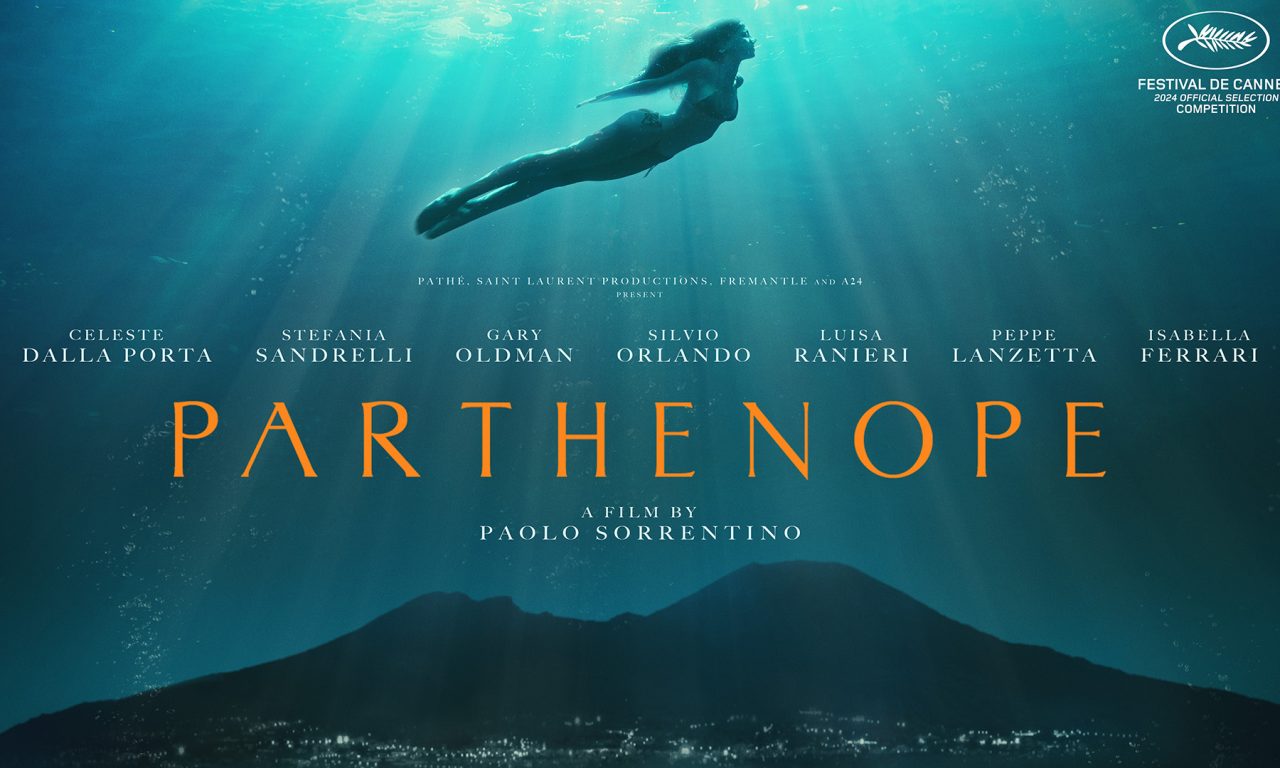
Italian filmmaker Paolo Sorrentino is celebrated for his visually arresting films, often characterized by grandiose cinematography, philosophical musings, and a unique blend of melancholy and surrealism. His works, such as The Great Beauty (La Grande Bellezza) and Youth (La Giovinezza), have cemented his reputation as one of the foremost auteurs in contemporary cinema. With Parthenope, Sorrentino takes his craft into a new, unexpected direction, creating a visually striking, emotionally nuanced film that intertwines mythology, human desires, and the complexities of identity.
The Myth of Partenope
The film’s title, Parthenope, references the mythological siren from Greek mythology who is said to have lured sailors to their doom with her mesmerizing songs. According to the myth, Parthenope’s beauty and voice were so enchanting that they led to the destruction of all who sought her out. Eventually, after her death, her body was said to have washed ashore near the modern city of Naples, where her myth became entwined with the origins of the city itself.
In Sorrentino’s film, Parthenope is not just a historical or mythological figure, but a representation of something far more elusive: the essence of human desire and the continuous search for love, beauty, and self-identity. The myth is subverted and reinterpreted, just as Sorrentino does with many elements of his filmmaking. In his hands, Parthenope becomes both a muse and a mirror, reflecting the insecurities and longings of those who encounter her.
Plot and Themes: A Love Story in Naples
The film centers around a love story that unfolds against the backdrop of Naples, a city often depicted in Sorrentino’s works as both chaotic and enchanting, full of contradictions and passion. The protagonist is an unnamed narrator, a young man caught in the thrall of a tempestuous, fleeting romance with a mysterious woman named Parthenope. As he becomes entangled in her web of beauty and allure, he begins to question his own identity, his purpose, and the nature of love itself.
In true Sorrentino fashion, the narrative is less concerned with linear storytelling than with exploring the emotional and philosophical landscapes of the characters. The film weaves together themes of self-discovery, the intoxicating power of attraction, and the eternal conflict between idealism and reality.
One of the most striking aspects of Parthenope is the fluidity with which it moves between time and space. Sorrentino employs a non-linear narrative structure that is as elusive as the siren herself. Through fragmented moments, visual symbolism, and layered metaphors, the film offers a meditation on the ephemeral nature of love and the difficulty of truly understanding oneself or another person.
Visual Style and Cinematic Language
Visually, Parthenope is a masterpiece, blending classical elements of Italian cinema with Sorrentino’s distinctive style. The film’s color palette is rich and warm, bathing the city of Naples in golden hues that evoke both nostalgia and a sense of timelessness. The cinematography is lush, with wide, sweeping shots of the city juxtaposed with intimate close-ups of the characters, allowing the audience to feel the tension between external beauty and internal longing.
Sorrentino’s use of architecture and landscapes plays a significant role in shaping the narrative. Naples, with its stunning vistas of the sea and historic buildings, becomes more than just a setting—it becomes a character in itself, embodying both the grandeur and decay of human ambition and emotion. The city’s tumultuous relationship with its past is mirrored in the characters’ struggles to reconcile their desires with the harsh realities of their lives.
The film also makes extensive use of symbolic imagery, incorporating elements like water, mirrors, and the moon to reflect the themes of transformation and illusion. Water, in particular, plays a central role—just as the siren’s song could lure sailors into the depths, so too does the idea of water as a source of both creation and destruction pervade the emotional undercurrents of the narrative.
Performances and Characters
The cast of Parthenope delivers strong, nuanced performances that bring the film’s intricate themes to life. The protagonist, played by an up-and-coming actor, embodies the vulnerability and confusion of someone caught in the throes of passion and self-doubt. His relationship with Parthenope, portrayed by a talented actress known for her ethereal beauty and commanding screen presence, is both magnetic and tragic.
Parthenope herself is a figure of mystery, almost otherworldly in her allure. She is both the object of desire and a symbol of the unattainable, a person whose true nature remains elusive even as she captivates everyone around her. The supporting characters, each representing different facets of love, obsession, and identity, provide a rich emotional texture that complements the central narrative.
The film’s dialogue is poetic and introspective, filled with philosophical reflections on life, love, and the search for meaning. Sorrentino’s mastery of language shines through in the characters’ conversations, which often blur the line between the mundane and the profound.
Conclusion: A Cinematic Enigma
Parthenope is a film that invites multiple interpretations and rewards the attentive viewer. Like the siren of legend, the film is both beautiful and elusive, drawing the audience in with its allure while challenging them to confront the complexity of human emotions and desires. Sorrentino’s trademark visual style and intellectual depth are on full display, but what makes Parthenope stand out is its willingness to embrace ambiguity, offering a meditation on love, identity, and the nature of beauty that refuses to provide easy answers.
For fans of Sorrentino’s work, Parthenope will undoubtedly feel like a familiar yet fresh exploration of the themes that have defined much of his career. It is a film that demands patience and contemplation, but for those who are willing to dive into its enigmatic waters, it offers a profound and unforgettable cinematic experience.

